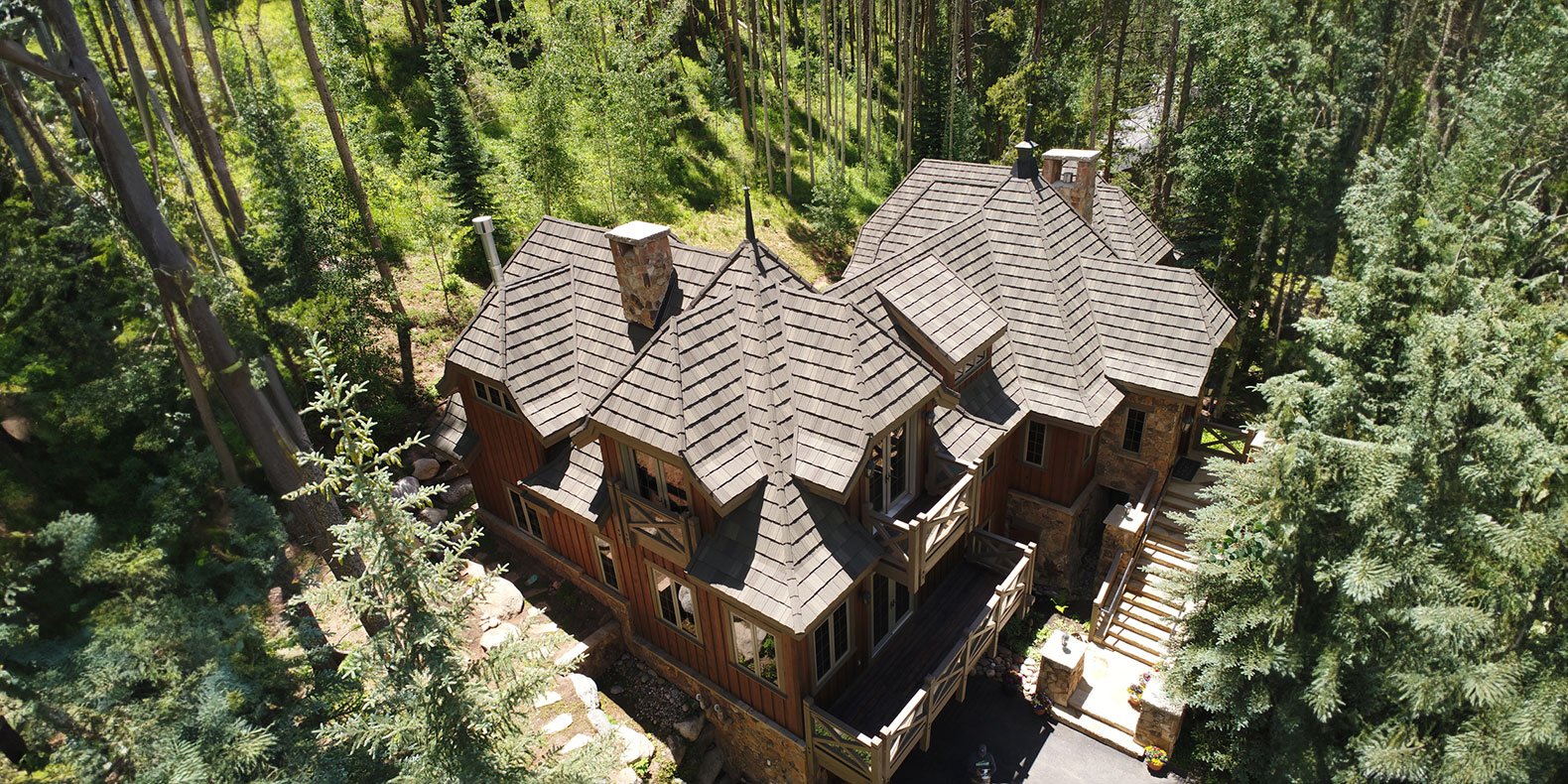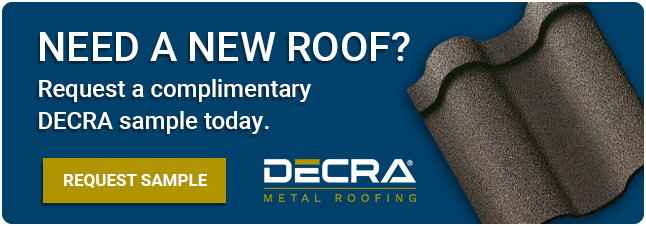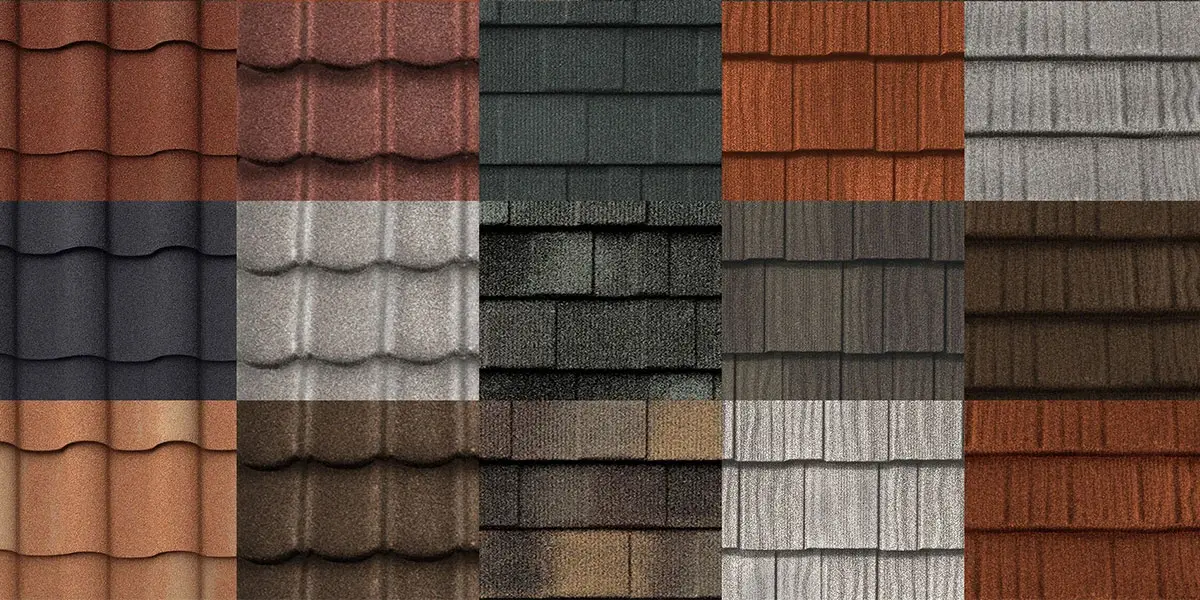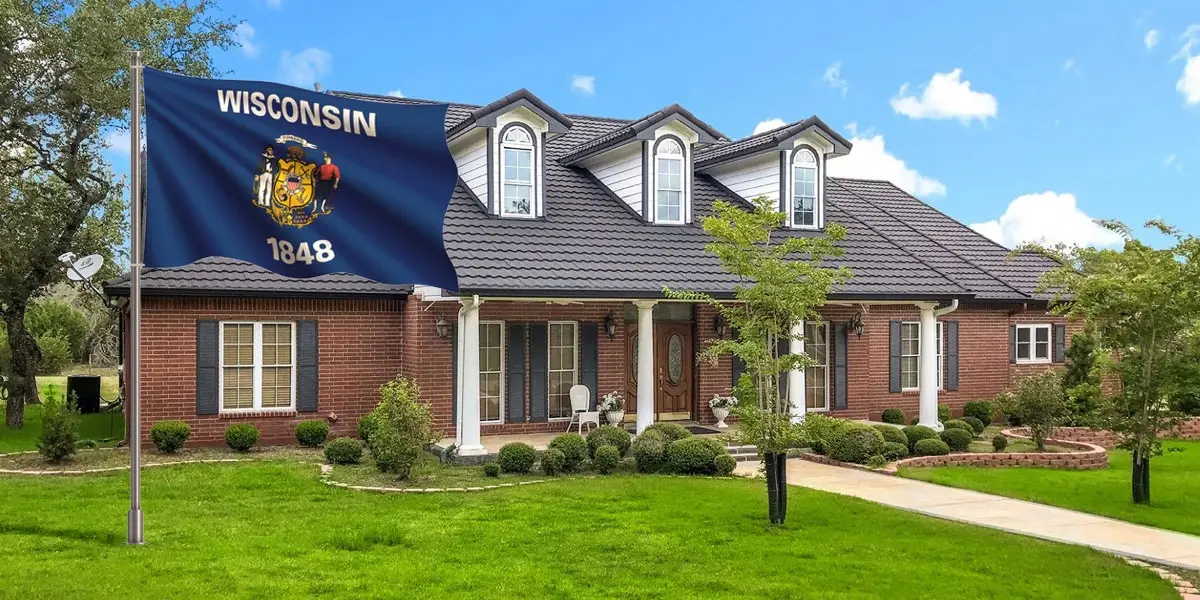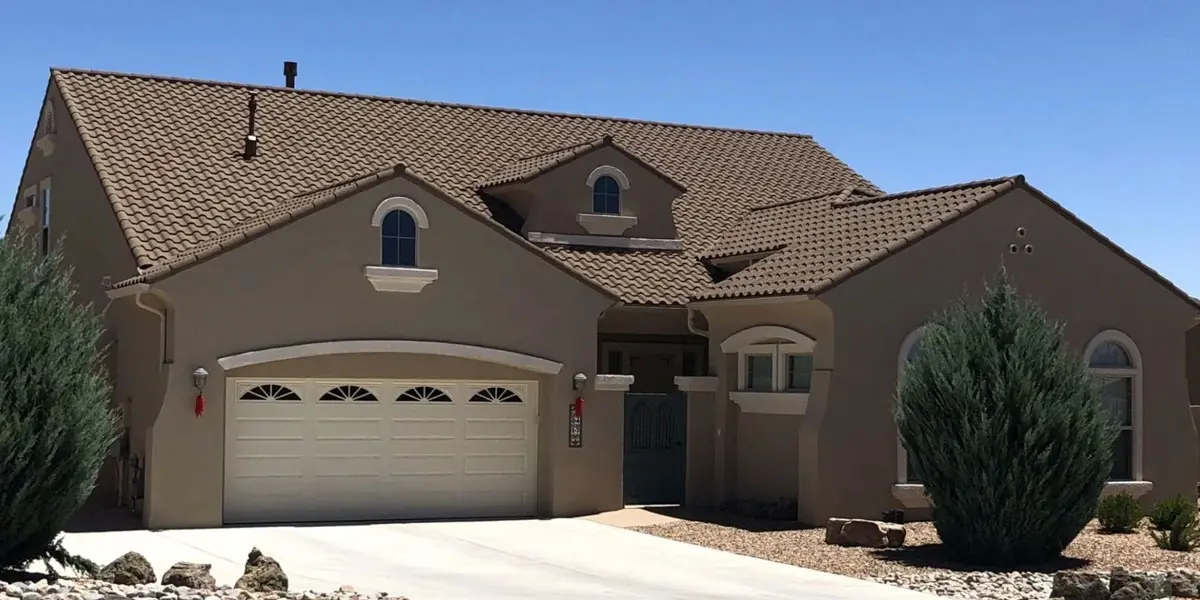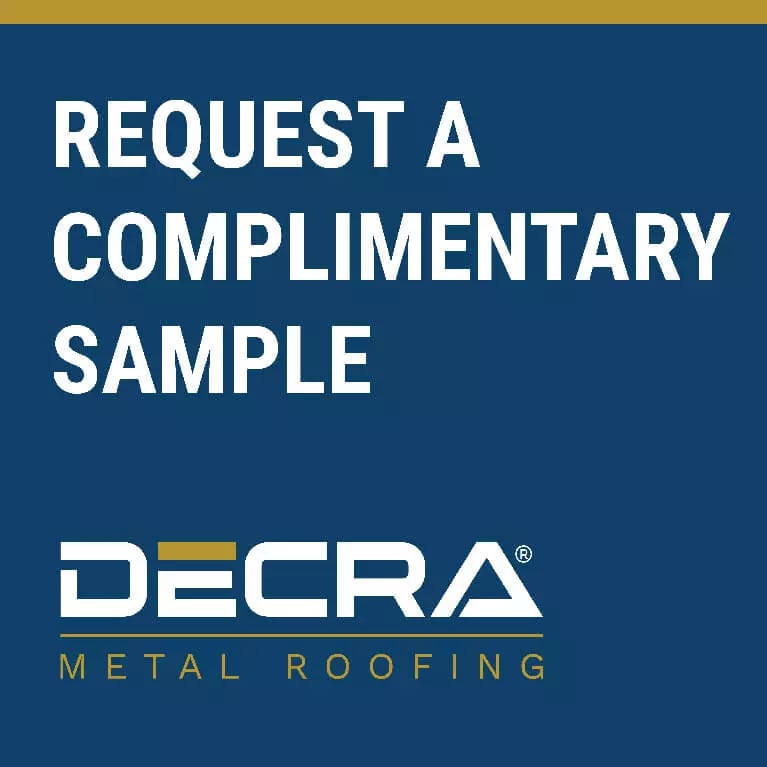For decades, wood shake roofs have been a popular choice for traditional home styles like Colonial and Cape Cod. While they add charm and character, they often lack the durability and longevity found in modern metal shake roofs.
In this article, we touch on:
- The history of shake roofing and the differences between wood shakes and shingles
- Why more homeowners are making the switch from wood shake to metal shake roofs
- How DECRA Metal Roofing achieves the classic look of traditional wood shakes
You’ll find that metal shake roofing can be just as visually appealing as traditional wood shakes, but with greater practicality and protection over time. Whether you plan to live in your home for many years or are thinking about selling, a metal shake roof can be a smart investment.
The History of Shake Roofing
Early settlers in what is now the United States brought many construction techniques from Europe, including roof-building methods. They often used wooden shakes or shingles to cover their homes in the New World, taking advantage of the timber resources. Wood shake roofs are especially prevalent on historic homes in the Northeast, where their rustic charm reflects the region's architectural heritage.
However, around the start of the 20th century, wood shakes began to decline in popularity with the rise of asphalt shingles. Asphalt offered advantages that wood could not match, including:
- Lower cost
- Greater fire resistance
- Easier mass production
- Simpler installation
- Less maintenance
Over the next century, asphalt shingles became the dominant roofing choice in the U.S. Today, however, metal roofing is gaining traction and is now considered the second most popular roofing material for both residential and commercial properties. Before diving into the benefits of metal shake roofs, it's important to understand the differences between wood shakes and wood shingles.
Wood Shakes vs Wood Shingles: What’s the Difference?
Many people use the words “shakes” and “shingles” interchangeably when it comes to wooden roofs, but they’re slightly different when it comes to their manufacturing process.
Both are cut from cedar, cypress, redwood, or pine. However, shakes are typically hand-split from logs, resulting in a rougher, more textured surface, while shingles are sawn on both sides, creating a smoother and more uniform appearance. Wood shingles have a thinner butt—about ½ inch wide—compared to shakes, which have a ¾-inch butt and may be split on one or both sides.
Traditional Shake Roofing vs. Metal Shake Roofing
Nowadays, homeowners don’t have to choose between wood shakes or wood shingles. There’s another choice that offers the same aesthetic, but with superior durability: metal shake roofing.
Longer Lifespan
Metal roofs have a lifespan that is two to three times longer than traditional roofing materials like wood shakes and shingles. This longevity is largely due to its ability to withstand severe weather including:
- Wind: Wood shakes are typically nailed down one by one, leaving them more susceptible to wind uplift. In severe weather, such as hurricanes or tornadoes, individual shakes can loosen or blow off, exposing the roof deck to potential damage. Metal roofs, with their interlocking panels, offer better resistance to wind uplift. DECRA products are rigorously tested to withstand high-velocity winds, including those common in hurricane-prone areas like Miami-Dade, and come with a warranty that covers winds up to 120 miles per hour.
- Hail: Large hailstones can crack, split, or puncture wood shakes, leading to significant repairs or even full replacement. Once damaged, wood shakes are more prone to moisture infiltration, which can cause further issues like rot and mold. Metal roofs, on the other hand, are highly resistant to hail damage. For instance, DECRA roofs have the highest possible UL2118 Class 4 Impact Rating, and are warrantied for hailstones up to 2.5 inches in diameter.
- Water: In areas with heavy rainfall and humidity, wood shakes can absorb moisture over time. When exposed to wind-driven rain, water can seep into cracks and joints. Proper installation and regular maintenance, including cleaning and treatment, are essential to minimize water-related damage in shake roofs. Metal roofs, such as DECRA, are designed to withstand severe weather conditions, including wind-driven rain. In fact, DECRA’s products have been tested to protect against wind-driven rain at speeds of up to 110 miles per hour, offering protection against water infiltration without the constant maintenance that wood shakes require.
- Snow and Ice: In colder climates, wood shakes can struggle under the weight of snow and ice. The freeze-thaw cycle can cause the shakes to crack or split, and ice dams can form on the roof, leading to further water infiltration as the ice melts. The non-porous nature of metal roofs means that snow and ice typically slide right off the roof before it can accumulate.
Fire Resistance
Wood shakes are vulnerable to fire because they’re made from natural wood, which is highly flammable. Over time, wood shakes can dry out, making them even more likely to catch fire. Most wood shakes don’t meet modern fire safety standards unless treated with fire-retardant chemicals, and even those treatments can wear off over time, especially in harsh weather. This is a big concern for homeowners in wildfire-prone areas.
Metal roofing is non-combustible, making it one of the best choices for fire protection. All DECRA Metal Roofing products have earned the highest Class A fire rating. Additionally, the interlocking panel system helps prevent the roof deck and framing from igniting due to flying embers or spreading flames.
Many traditional roofing materials, including wood shakes, can’t offer this level of protection.
Low Maintenance
Traditional wood shakes demand significantly more maintenance than metal roofing, which often requires little-to-no care for years. Because they are made from natural wood, shakes are prone to developing moss and mold. Homeowners frequently find themselves spending valuable time and effort on upkeep, including cleaning, scraping, and applying treatments to protect their roofs. Metal shake roofs eliminate these maintenance concerns, allowing homeowners to enjoy a durable roofing solution with minimal need for repairs.
With a better understanding of metal roofing's advantages, see how DECRA brings the classic look of wood shakes to life.
How DECRA Achieves the Classic Look of Wood Shakes
DECRA offers two metal shake roof options that capture the classic beauty of wood shakes while providing unmatched strength, allowing you to find the perfect match for your home’s unique style.
DECRA Shake
DECRA’s Shake line beautifully captures the distinct shadows and rich colors of traditional cedar shake, delivering the same rustic appeal. However, unlike real cedar shakes, DECRA does not rot and warp over time. It’s available in a wide range of colors, including charcoal, chestnut, granite grey, shadowood, and weathered timber.
DECRA Shake XD
DECRA’s Shake XD line offers a stone-coated metal solution for those looking to upgrade from traditional thick hand-split wood shakes. It preserves the classic tones and textures of wooden roofing materials while providing superior durability. Unlike wood shakes, DECRA Shake XD maintains their original color for decades without the need for chemical protection, or repeated staining or spraying to withstand the elements. DECRA Shake XD is available in antique chestnut, pinnacle grey, midnight eclipse, and woodland green.
See What a DECRA Metal Shake Roof Would Like on Your Home
If you’re drawn to the classic look of wood shakes but desire the durability of metal, DECRA has you covered. We encourage you to request a complimentary sample. Once you do, a DECRA Metal Roofing Advisor will be in contact with you to confirm a few details and assist you in visualizing how a DECRA roof would look like on your home–completely free of charge.
Editor’s Note: This blog was originally published in April 2020 but has been updated with relevant information.

